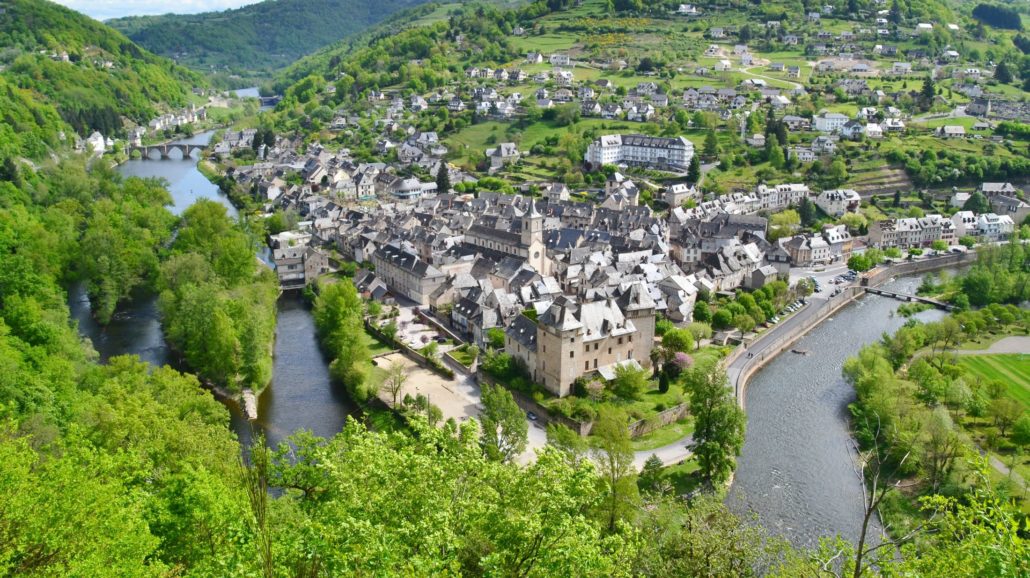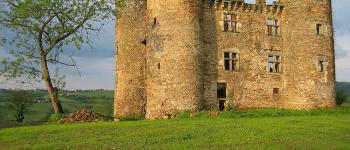
The Pays d'Entraygues is located in northern Aveyron, at the junction of two rivers, the Lot and the Truyère, between Gorges and Valleys, equidistant from Conques and Aubrac, at the bend of three heavily wooded valleys from which rocky ridges emerge overlooking deep gorges.
Entraygues-sur-Truyère is home to numerous medieval remains, old streets, cantous and ganelles, superb half-timbered and corbelled houses dating from the 15th and 16th centuries, its castle and 13th-century bridges....
Castle and ramparts
Built between 1278 and 1290 by Henri 2, Count of Rodez, the castle was followed by the town ramparts with battlements, defensive towers and entrance gates (there would have been a drawbridge on each side), all surrounded by a moat.
The castle was plundered and devastated in 1587. Partially razed in 1604, a new building was erected in the 17th century by Henri de Monvallat, the new lord of Entraygues. All that remains of the 13th-century remains are the 2 towers, the stairwell and the vaulted ground-floor room on the left...
All that remains of the fortifications are sections of the surrounding wall and the entrance gates, whose arches were removed in the 19th century when the new church was built and partially inaugurated on October 24, 1866.
Most of the old watchtowers were then removed and their stones used to build the new church.
Saint-Georges church
This late 19th-century church is simple and uncluttered.
A plaque in memory of Déodat de Laparra, a great benefactor of Entraygues, stands on a pillar in the aisle near the altar of the Virgin Mary.
The chapel, built thanks to Déodat de Laparra's bequest, became a parish church in 1680. It was rebuilt in 1860, almost on the same site but with a different orientation, and restored in 1960.
Gothic bridge over the Truyère river
Classified as a historic monument, this bridge was built in the 13th century by the Pontifical Friars, who were not monks at all, but members of congregations whose mission was to build bridges. It had a toll tower at each end, and until the early 20th century, small merchants and peddlers stood in the shelters to offer their wares to passers-by. The bridge withstood the terrible floods of the past.
The renovation of the Truyère bridge in 2018-2019 has highlighted the different ages of this listed monument. The 4 ogival arches date from the 13th century, making it the 1st Gothic bridge in Aveyron and probably in France, laid on wooden foundations. At the time, there appear to have been 2 or 3 towers, used to protect the site and collect tolls. They were destroyed when the château was dismantled. The 19th century saw the extension of the bridge on the left bank, the small semi-circular arch overhanging the old Entraygues-Banhars road, and the parapets
which have just been completely rebuilt and clearly show the difference with the Middle Ages.
Now entirely pedestrianized, the bridge can be admired by day, but even more so under the superb night-time lighting, which creates an unforgettable reflection in the Truyère River.
Notre Dame Bridge
Built at the end of the 13th century, the Comte d'Armagnac had it cut down in 1388, along with that of Espalion, to prevent the passage of truckers.
The Pont d'Olt seems to have suffered more from the vagaries of the river than the Truyère bridge. A list of the numerous repairs known to have been carried out on this bridge should demonstrate the extent of the work carried out on this edifice. Repairs were carried out in 1524 and 1680 (at the same time as the Truyère bridge).
Notre Dame du Pontet chapel
Located at the south-east entrance to Entraygues, at the confluence of the Ruisseau d'Estampe and the Lot, this chapel dates back to 1097. This small sanctuary comprises 2 buildings: a recluserie or hermitage, later dedicated to Notre Dame, is the original edifice. Enlarged in 1679, the chapel became the Ursuline convent (3 nuns lived above it). Shortly afterwards, the Pénitents noirs de la Croix brotherhood replaced them until the early 20th century. The original chapel was restored in 1960 and the Pénitents chapel in 1990.
A village to visit... really.
Pays d'Entraygues Tourist Office
Place de la République
12140 Entraygues-sur-Truyère
Tel.: 05 65 44 56 10
accueil@terresdaveyron.fr
https://www.tourisme-entraygues.com/fr/visites-decouvertes/entraygues.php





